When it comes to alternative building methods to construct a home, you have a host of different choices. Some rely on fairly modern materials like poly bags or used tires (considered new guys on the block).
Others have been used for millennia and have proven themselves to stand the test of time. Of this second group, rammed earth is a rock-solid example.
So let’s get talk about the nitty-gritty details of rammed earth.
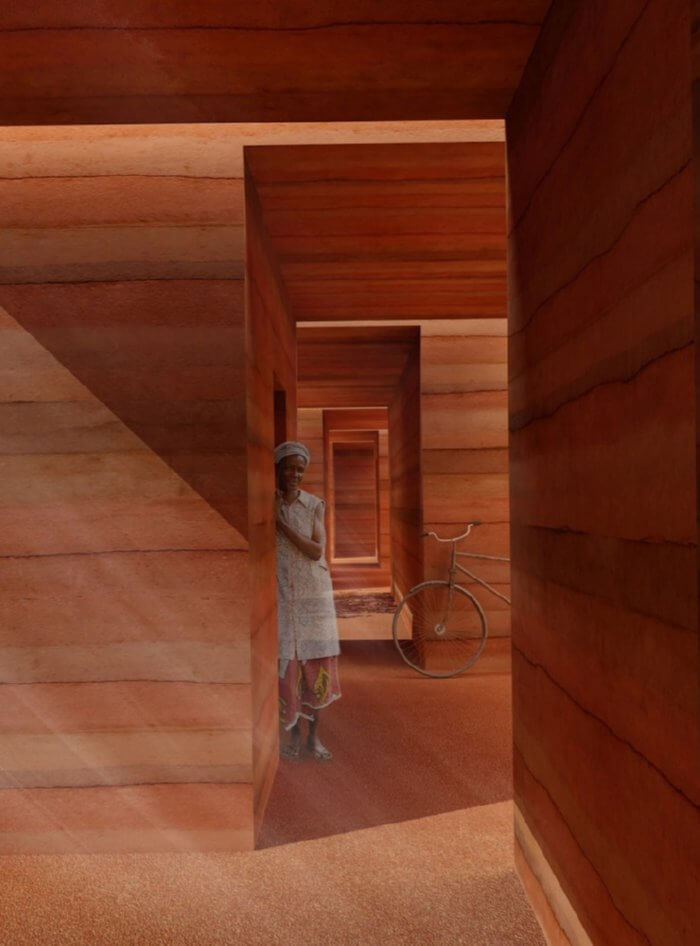
What Is Rammed Earth?
Rammed earth is exactly what it sounds like – dirt compressed into a rock-like material through tamping. Usually, this is done by pounding the earth with a heavy implement (like a metal tamper or a log), but some people have mechanized this process in modern times, and use an electric or air-powered tamper.
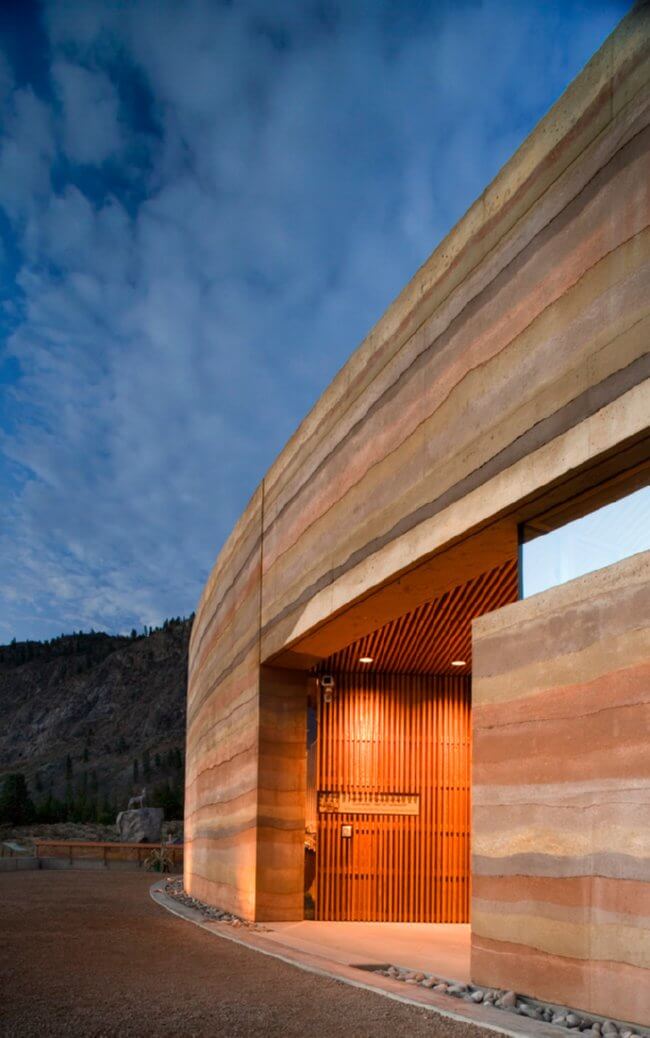
Whatever method used, you are basically forming a sedimentary rock from the dirt. Instead of the weight of the upper layers and water creating the pressure, you provide the compressive forces required.
What Kind of Dirt Can Be Used for Rammed Earth?
Not all soil types are suitable for use in a rammed-earth structure. Most soil types will require the addition of one or more supplements to the mixture. You must remember that soil is a mixture of particles in different sizes – sand (the largest particles), silt (medium-sized particles), and clay (fine particles).
Gravel, which is even larger than sand, is also found in the soils of many locales in this country. When making a mixture for rammed earth, you should know that the larger particles (sand and gravel) give strength while the clay is what helps it all stick together.
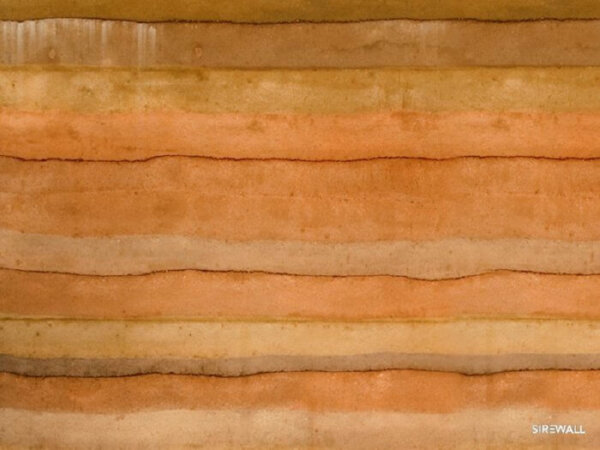
The general rule of thumb is that you want the clay content to be about 25% to 30% of the mix. I should also mention that some modern builders add cement to the mixture to help stabilize the soil, but this was not traditionally done.
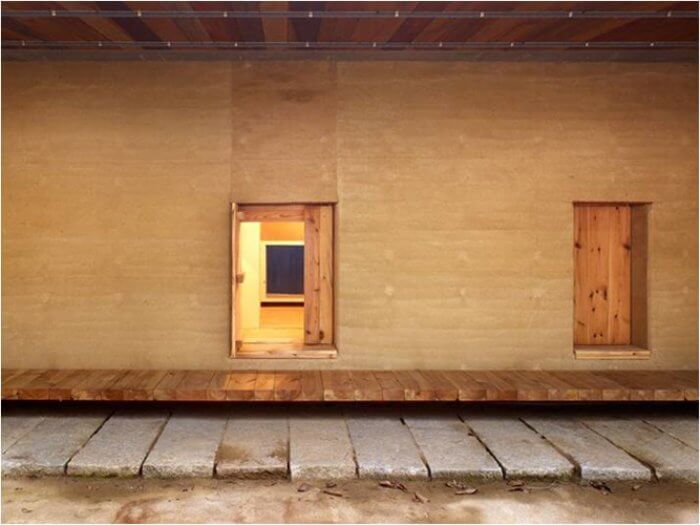
Whatever mix you decide on, it is always advisable to make up test blocks of various mixtures from your site soil with whatever additives are necessary, and see which blocks perform the best. Lots of cracking after drying? Too much clay in that batch. Too crumbly? That batch is too sandy, so add some clay. If you want to avoid future issues, make sure to make these test blocks. Better to use a couple extra weeks at the beginning than have a house that won’t stand in the end.

If you are concerned about the stability of your soil for rammed earth, you can always try one of two other similar methods: rammed earth tires or earthbags. Both have a permanent enclosure for the earth, so they are more forgiving of less-than-perfect soil.
How Rammed Earth Structures Are Built

1919 Rammed Earth Cottage Clough William-Ellis bungalow Newlands Corner
As with almost all structures, a rammed earth structure is built from the ground up. You need to start with a strong foundation. In the past, this foundation was often large stones found in the area of the building. In modern times, the foundation is more often than not poured concrete.
Whatever you choose, the foundation must be a substantial one as the weight of the rammed earth walls that will rest upon it is huge. And don’t forget that the purpose of the foundation is not only to support the walls, but also to elevate them off the ground so moisture cannot work its way up into the earthen wall (and weaken it).

Once you have the foundation in place, you can actually get to the rammed earth part.
To do this, you are going to make forms to hold the dirt in place while you tamp it down. Because of the forces that will be produced, these forms need to be quite substantial. Typically, lumber-reinforced plywood forms are used, but there are many different designs available that can fit whatever your budget might be.
To get started, you put the form on top of the foundation. Then you add dirt. Don’t add too much earth at one time or you won’t be able to compact it completely — which leads to a weak wall. If you are tamping by hand without mechanical help, I would suggest starting with 5 inches or so of soil. Once compacted, the soil should be about half that volume. After you finish this first layer, add another 5 inches of soil, and tamp it again.
Continue this process until you have reached the top of the form. At this point, you will need to dismantle the form and move it to the next area (usually right next to where you were). This process is repeated until you have completed the first level of the wall all around the house. Next, you will need to raise the form and tamp soil on top of the wall you just made. Continue this process until the wall is completely finished to the desired height.

On top of the walls, you can pour a concrete bond-beam to unite the whole structure and to serve as an attachment point for the roof structure. As far as the roof itself goes, you can choose pretty much whatever type of roof you want, from a living roof to a conventional asphalt shingle roof to a metal roof. I would advise you to make sure to have generous overhangs to help protect your earthen walls from wind-driven rain – the less water that gets on the walls, the better.
Advantages of Rammed Earth

Dirt Cheap
This method of construction can be extremely cost effective. It can be as cheap as free, if you do everything yourself, but for most people it will cost slightly more than that. However, the main material, dirt, should never really cost you anything.
Even if you aren’t using dirt directly from the building site, other builders are always looking for places to dump dirt from their construction sites. If you put a sign up at your building site or put an ad up online, you will probably get more dirt than you need in no time flat – all for free.
Low Environmental Impact
As with all alternative building methods, rammed earth comes with a small environmental impact. If you get soil directly from the site and the local area around you (especially the dug out soil from other building sites), it is hard to imagine a building material with less of a negative impact.
High Thermal Mass
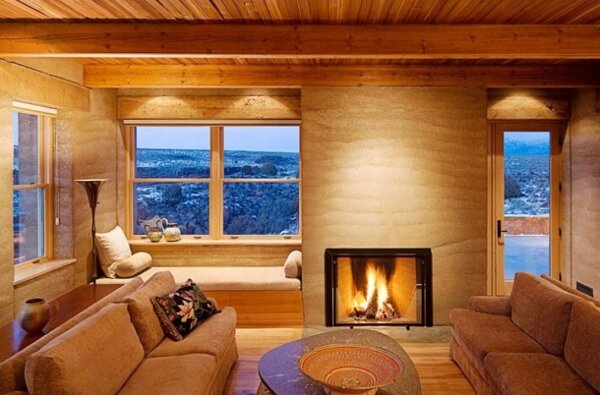
Whenever you build such massive walls, you are going to be able to take advantage of something called thermal mass. Thermal mass is the ability of a material to absorb heat energy and then give it off at a later time. Materials with a high density (like earth, stone, and tile) will have a high thermal mass and can therefore absorb a ton of energy from a heat source (like the sun or a wood stove). It helps moderate the temperature inside the building and prevents thermal swings (quick temperature changes) as the temperature of the entire mass of the wall will have to change in order to affect the interior air temperature.
Good Soundproofing
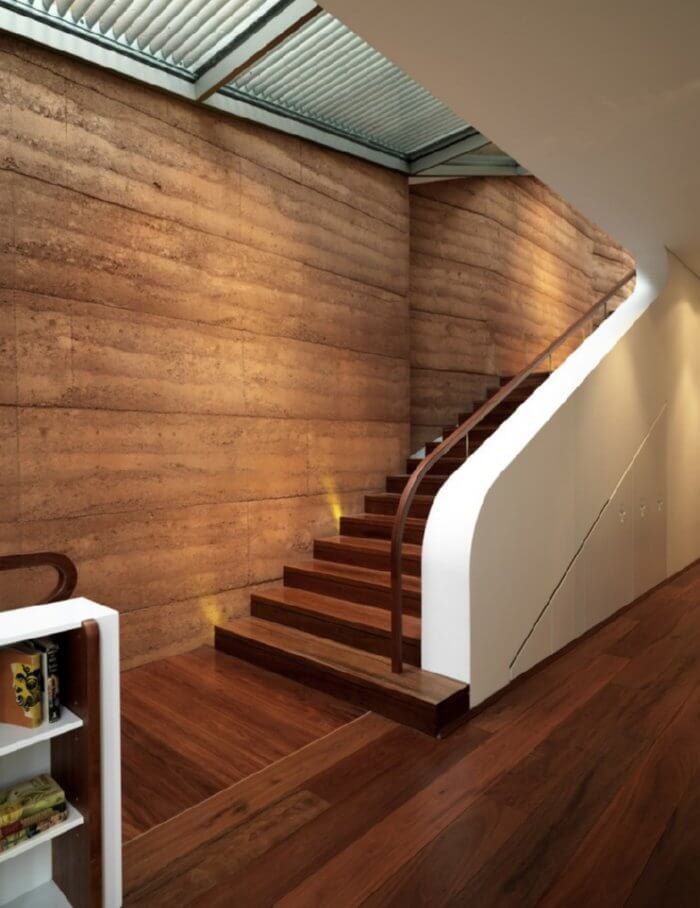
Anyone who lives near a loud road will know that traditional stick-framed houses with 3.5 inches to 5.5 inches of fiberglass mat insulation do not provide a good buffer from noise. But a nice thick earth wall certainly does. If you live in an area with a lot of noise, rammed earth might just be the ticket for you.
Easy to Learn
The hardest part of rammed earth construction is getting the soil mix right and building the forms. Apart from that, it couldn’t be much easier. Add dirt, tamp until compact, repeat. It makes it a very good method for owner-builders to use.
Nontoxic
In this day and age of harmful chemicals in everything we put in and on our bodies, it is nice to know that at least the building we live in won’t be creating a toxic environment for us. Dirt walls won’t off-gas any dangerous fumes or leach chemicals onto anything it touches.
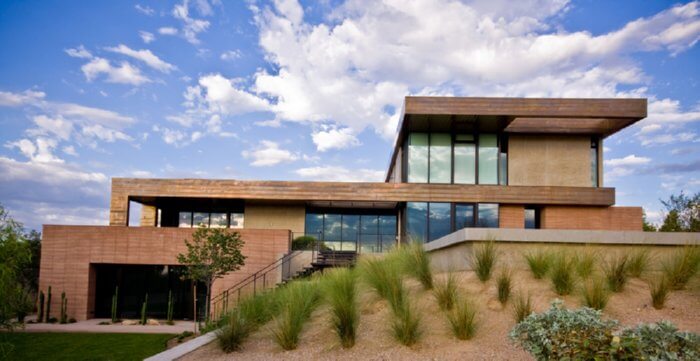
Disadvantages of Rammed Earth
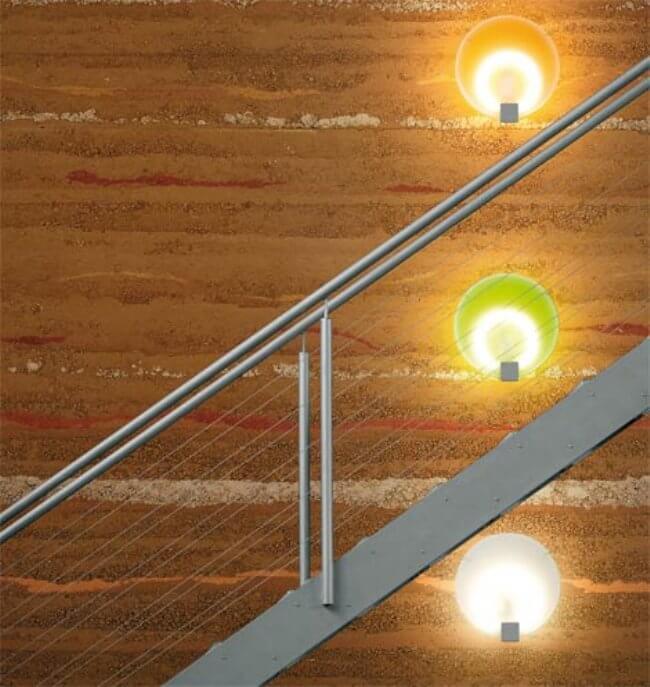
Low Insulative Value
Rammed earth does not have a high insulative value. To get the most out of its thermal mass, you will need to add insulation to the exterior of the building. Insulation can add significant cost to the structure.
Permits, Loans, etc.
As with all natural building methods, it can be difficult to get approval from government authorities to build a home using rammed earth. Either go to an area where there are no building inspectors, or learn to work with the building inspector in your area. And if you can, keep costs low so you do not need to get a loan from a bank. Finally, it might be difficult to get homeowner’s insurance when using building technologies that are not widely accepted.
Some Inspirational Pictures
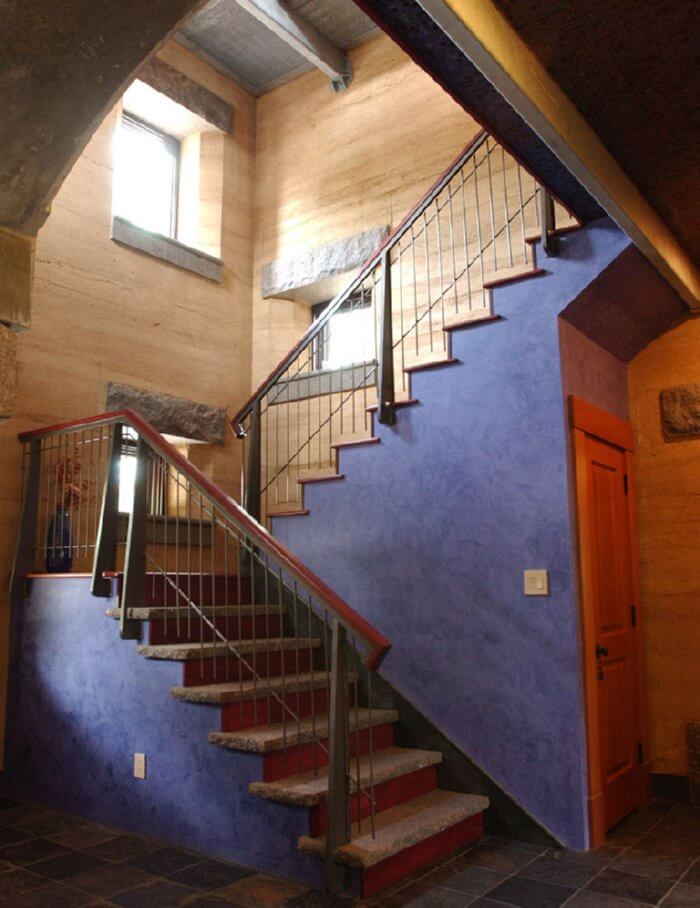


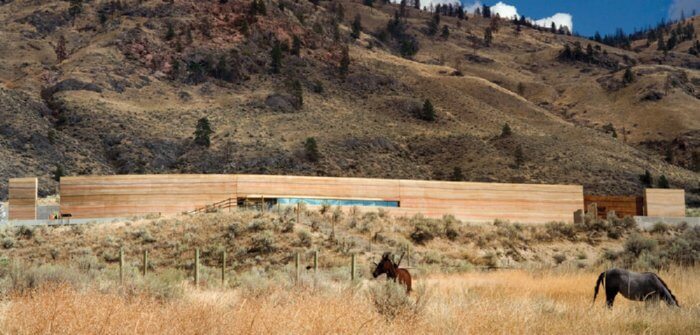

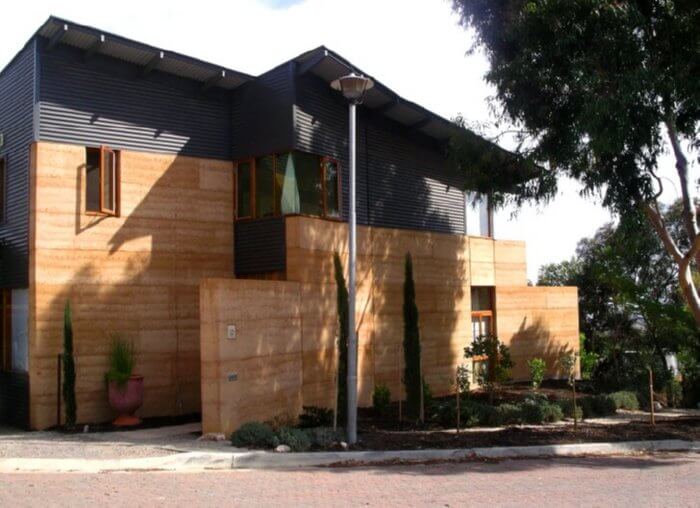
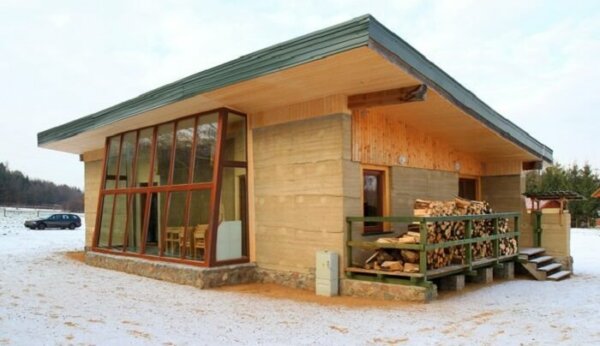
at Warsaw University of Technology.
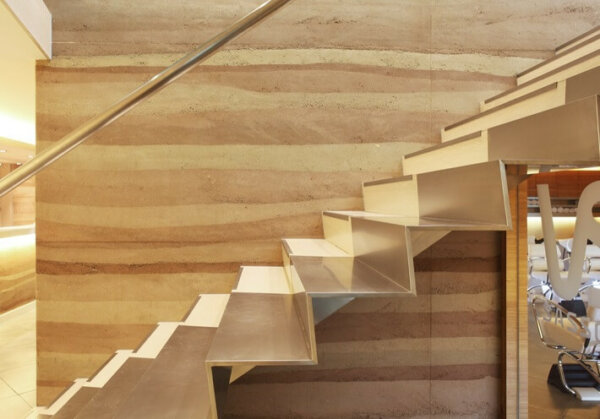
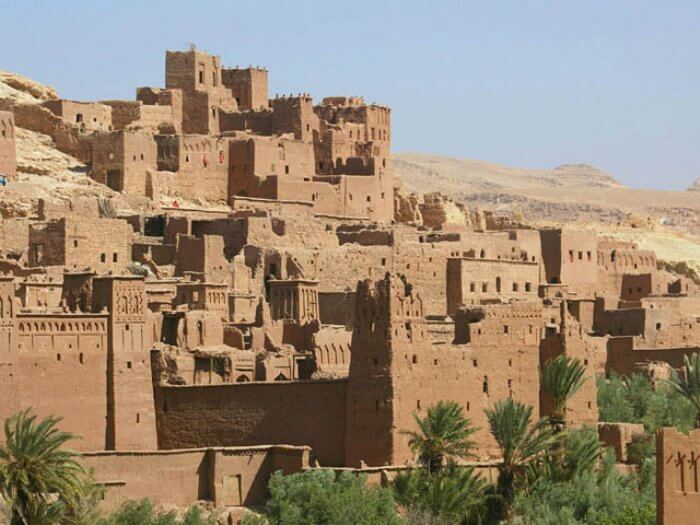
Books About Rammed Earth Building
- The Rammed Earth House: Rediscovering the Most Ancient Building Material by David Easton.
- Earth Building: History, Science and Conservation by Paul Jaquin and Charles Augarde
- Adobe and Rammed Earth Buildings: Design and Construction by Paul Graham McHenry













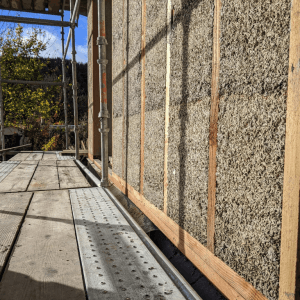




























hey, great article, did notice that the eden project is marked as dorset in england. actual location is near st. Austell, Cornwall.
a very complete article thank you very much from morocco north africa, a few miles from ait ben hadou rammed eath village …looking foword to know about this modern technique formworks technical details ..
Thank you for this interesting article. I am an architecture master student at the TUDelft in the Netherlands. I would like to ask some more technical questions from your experience on rammed earth walls. Could I send you some questions?
Rammed earth wall:
Thanks a lot and I am thinking of construction of my own house with a Rammed earth technique. I love it because it is eco-friendly and more over it is locally available materiel.
One thing that I stuck with is, how to get a frames for the wall to build?
Please if anybody can advice me how to build a frame for the rammed earth.
I appreciate if any can help me on that.
thanks a lot in advance.
Tshering, from Bhutan
just loved it the way itz explained …. truly inspiring ….. and changes the ones thinking to go for grren building
thank you very much for this interesting article! great information and pictures!
thank you very much for this nice web
Another helpful resource for rammed earth construction is the NEW MEXICO EARTHEN BUILDING MATERIALS CODE which I authored for the State with the assistance of local NM rammed earth contractors at the time. The code was developed and adopted through the State of New Mexico Alternative Materials & Methods in Construction process. The code is available online through the New Mexico Construction Industries Division website.
FANTASTIC, ALL, your article, blog, pictures, the comments on each and every one of the pictures, short, precise, beautifully and simply said.
I want to build an adobe house. Now, after looking at all this wonderful information. Mmmmmmmmmm, now I am having a hard time making a decision between adobe and ram earth. My opinion of ram earth, changed completely. The view I had of it, was not as beautiful as adobe homes, or cal-earth dome homes. I will probably start the construction next year. The site is 60Km. from sea, and very high humidity, around 95%. Any comments welcomed.
THANK YOU SO very MUCH!!!!!!!
DD
The last photo is not Indian, it is written in Persian (Farsi). Besides, the Indian alphabets are not anything near Persian alphabets I’m not sure who first decide that this is in Indian but I assume it would be only scientifically right to correct the information given in this page.
In the above it is written: two person named tabarkonandegan (as earth stocking mans) then from two stock of soil, make a wall…
By the way thank you for the information you provided here. Extremely helpful!
the house in the 8th photograph from the top is the Lacey Residence, in Paradise Valley, AZ, and was covered in detail in the Earth Architecture blog posting of August 12, 2012.
mlb shop cyber monday sale mlb shopos promo code
thanks for sharing your thoughts with us it was very helpful nd continue to sharing such post with us.